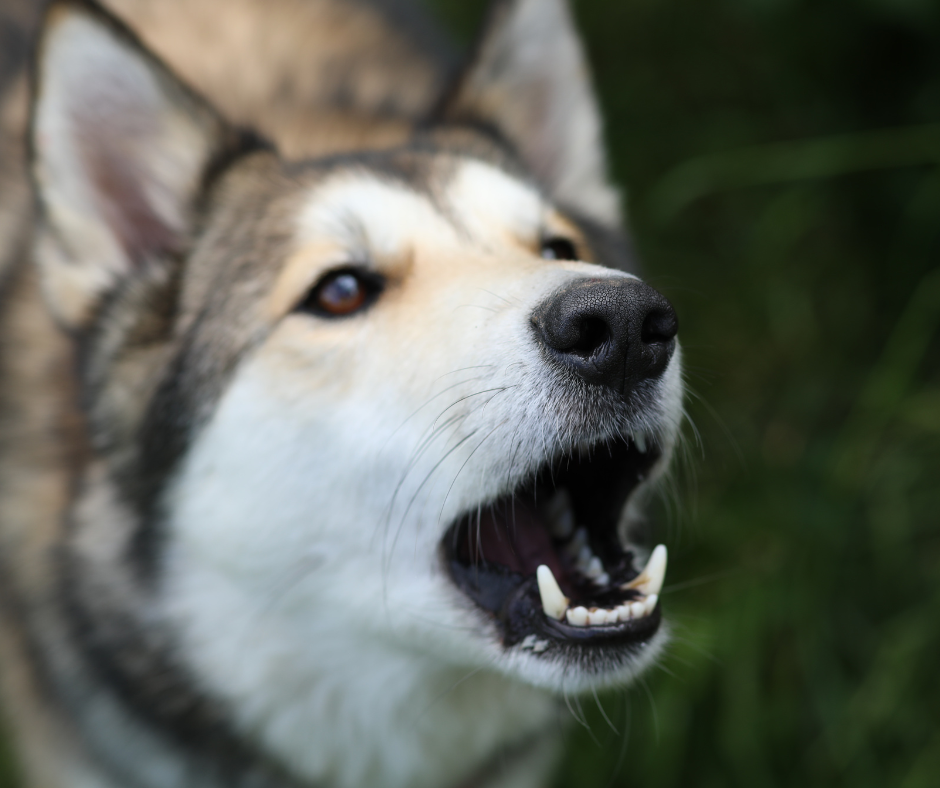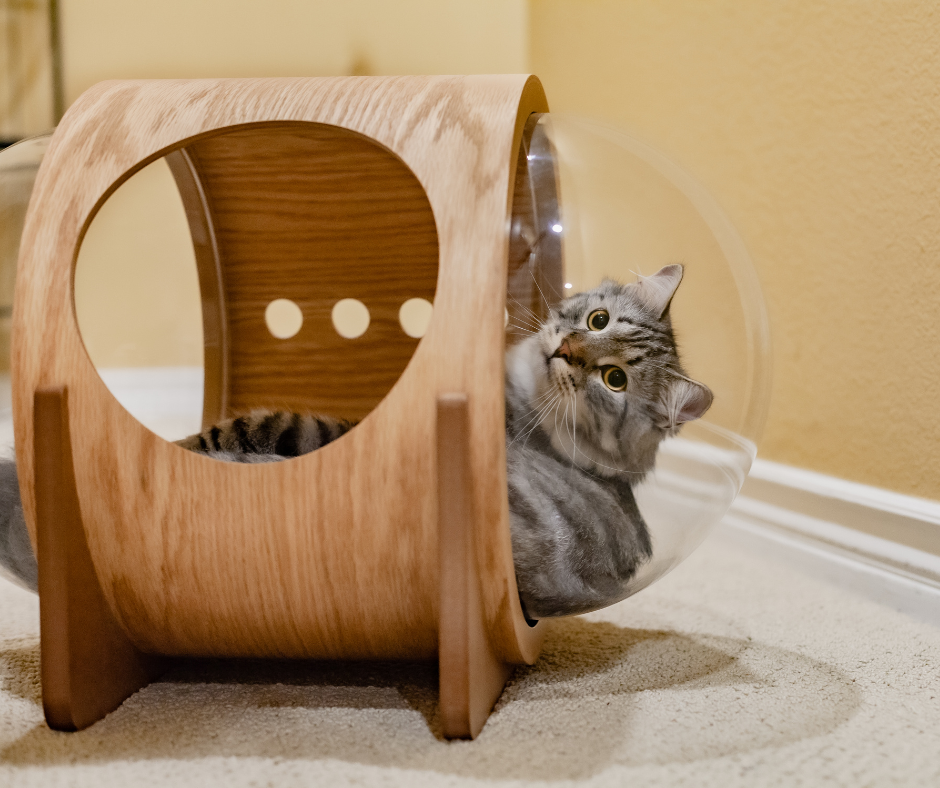The Science Behind Why Your Dog Keeps Barking and How to Stop It
Dogs are one of the most beloved pets in the world and their barks are a source of joy and entertainment for us. But why do dogs bark? And what does it mean when they do? In this article, we will explore the various reasons why dogs bark and how we can interpret their barks. We will also discuss some common use cases of barking, such as warning signals, communication with other animals, or simply expressing excitement or frustration. Finally, we will look at how to train your dog to bark less if you feel they are barking too much.
The Different Types of Dog Barks & What They are Trying to Communicate
Dogs are known for their ability to communicate with us through barks. But did you know that dogs have a variety of different barks? Each bark has a distinct sound and can be used to convey different messages. In this article, we will explore the different types of dog barks and what they are trying to communicate. We will look at how dogs use these sounds to express themselves, alert us of danger, and even just show their excitement. By understanding the various types of barks, we can better understand our furry friends and build stronger relationships with them.
Some of your dog's barking may be due to a medical problem or mental condition that needs treatment from an animal behaviorist. This could include bee stings, brain disease or ongoing pain from arthritis, for example.
This type of barking can be a sign that your pet isn't getting enough stimulation or exercise. Try to take your dog for a walk at least once every morning and make sure they've got an entertaining toy to play with or food to occupy them while you're gone.
Your dog may also be barking because they're frustrated or angry about something that's going on in their life, such as a new house move or an unexpected visitor. If this is the case, it's best to focus on teaching them alternative behaviors that they can use to show you they're happy and not upset.

Greeting Barking
If your dog barks when you arrive home, when you open the door to greet someone or when you leave, this is likely a welcome-to-the-house bark. If you can't figure out why this is happening, it might be a sign that your dog is nervous about coming into your home or being around people.
When this type of barking is accompanied by whining, tail wagging and other signs of friendliness, it's more likely that your dog is barking to say hello. This can be treated by teaching your dog alternative behaviors such as lying on a mat or inside a kennel when visitors enter your home.
Having your dog spayed or neutered will reduce territorial, protection and alarm-based barking because it decreases their motivation to protect their territory and defend their family members. You can also help curb this behavior by limiting what your dog can see, particularly when it's in the backyard or other areas where they may not be comfortable, such as near the front door.
Rapid-fire Full-Volume Barks
When your dog barks fast and loud, it usually means they're very excited about what they hear or see, so you should take a moment to assess what's causing them to bark so you can manage the situation. They might be spooked or anxious, which can lead to aggressive behaviors and even dangerous situations, so it's important to work with a dog trainer to get the right help.
The pitch and number of barks in a row are also factors that can change the meaning of a bark. A dog that is enjoying playtime will have a higher-pitched bark than one that's warning off a burglar or disciplining a bad companion.
Analyzing the Reasons Behind Excessive Barking in Dogs & How to Stop It
There are a number of reasons why dogs might be barking excessively, including anxiety, boredom, and attention seeking. Taking some time to learn about these causes will allow you to better understand your dog's behavior and help you find the best ways to address it.
Anxiety: Many dogs bark when they are anxious or fearful. This is a common condition that can be controlled by teaching your dog positive reinforcement for good behavior.
Boredom: If your dog hasn't had an opportunity to socialize or exercise enough in their young lives, they might be barking out of boredom. Providing your dog with plenty of exercise and brain-teasing puzzle toys can help keep them entertained and stimulated.
Greeting/Play: When your dog sees you or other animals, they might bark to let you know that they are happy and excited. This type of barking is typically accompanied by tail wags and jumping up.
Territory: If your dog is territorial, they may bark when people or animals enter their territory. This type of barking can be addressed by limiting your pet's access to certain areas, such as your living room window or garden.
Pain: If your dog is in pain, they will bark a wide range of sounds. This is called "redirected aggression," and it should be addressed by a veterinarian immediately.
Territorial/Protective: This is a very common reason for barking and can be discouraged by restricting your dog's view of the area that they are barking at. Depending on the situation, you might consider covering windows or doors, erecting fences with solid wood instead of chain fencing or putting up a screen on a porch or patio.
It is also a good idea to bring your dog into the house when they are barking so that you can take some time to discuss what's going on with them and try to figure out why they are barking.
Training: If your dog is barking at a specific trigger, such as a doorbell or a telephone, you can train them to ignore it by using positive reinforcement. Start with the object that is triggering them to bark at a distance and then gradually move it closer so they don't bark as they hear it.
Using the "quiet" command to interrupt their barking is a great way to teach them that being quiet gets them a reward, such as a treat or fresh puzzle toy. Once your dog is consistently offering "quiet" when you use the word, slowly phase out the interruption tool to let them focus on their behavior.
Other methods to stop your dog's excessive barking include teaching them to stay calm and quiet when they are outdoors, avoiding rewarding them for the noise they are making outside, and giving them mental stimulation through exercise, brain-teasing toys, and walks.
Practical Tips & Techniques To Manage Your Dog's Barking Behavior
If your dog's barking is getting out of hand, there are a few practical tips and techniques you can use to help manage their behavior. From understanding why your dog barks and how to effectively communicate with them, to teaching them the appropriate response when they bark, these tips can help you become a better pet owner. With these strategies in place, you'll be able to reduce your pet's barking and create a more peaceful environment for everyone.
1. Block Noise
Barking is a natural behavior for dogs, but it can become a problem when they bark excessively. If you're constantly hearing high-frequency barking, it can disrupt your sleep and cause frustration.
Fortunately, there are many practical tips and techniques to help manage your dog's barking behavior. These include:
One effective way to reduce your dog's barking is to block their ability to hear outside sounds. This can be done by covering windows, playing background music or by changing the sound of your doorbell ring.
Another helpful technique is to use a spray-based glass coating that blocks your dog's view of outside areas they guard from inside the house. This will keep them from thinking it's a good idea to defend their territory.
To curb the barking, train your dog to ignore the outside sound, and reward them with a treat or puzzle toy when they are quiet. This is called "counter-training."
2. Reward Quietness
One of the most effective ways to reduce nuisance barking is to reward quietness. This can be done by using a verbal cue such as "quiet," followed by treats.
Start by rewarding a brief period of quietness, then gradually increase the length of time until you are rewarding longer periods. It is important to reward your dog consistently, so repeat this training daily for two to three sessions a day.
Once your dog learns that the quiet behavior earns a treat, they will begin to associate quietness with positive reinforcement.
Often, the reason your dog is barking excessively is because they feel unappreciated or are bored. Providing your dog with plenty of exercise and mental stimulation can help to ease their stress levels, which will in turn lead to less barking.
It is also helpful to try blocking access to a variety of noise-producing stimuli. For example, if your dog barks when someone rings the doorbell, block access to that sound by having an assistant walk the dog out of the way.
3. Block Access to Favorite Toys
Keeping your favorite toy hidden from the dog's reach is a good way to encourage quiet behavior. You can make this a game by giving your pet a treat for being good while he's locked in his crate or gated room.
The best part about this strategy is that it may be less expensive than you think. For example, a simple treat dispensing toy is a far more cost effective option than the pricier stuffed animal.
As an added bonus, you may even end up with a dog that's less interested in barking all the time. To help with this, consider setting aside some of your pet's favorite toys for special occasions, such as a day off or when you have guests over. This will help prevent your dog from reverting to his old habits. The most important factor is to make sure your dog doesn't find himself tempted to play with his toys at the wrong time.

4. Reward Good Behavior
Using positive reinforcement, such as giving your dog attention or a treat when they do something you want them to do, can help shape desirable behavior. Negative punishment, on the other hand, can backfire.
If your dog barks at people or animals passing by the living room window, for example, draw curtains or keep the windows closed. This will reduce the amount of stimuli that set your dog off and can even discourage them from barking altogether.
Teaching your dog to ring a bell when they need to go outside can also discourage them from barking excessively. Start by ringing it when they are calm and quiet, then gradually increase the time they must stay quiet before being rewarded.
Another way to reward good behavior is to give your dog a sticker or star every time they do something that you want them to do. These can be things such as playing with you or being extra nice to the kids before bedtime.
Continue reading












































